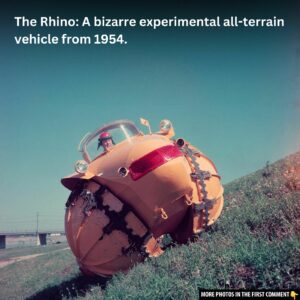In the aftermath of World War II, the world was in the midst of transformation. While the global economy struggled to regain its footing, a new breed of cars was emerging. Microcars, small and affordable, became the solution to the rising demand for economical transportation in a time when resources were scarce, and the need for efficiency was paramount. These cars, though often practical, were lacking in style and comfort, something that only a few visionaries sought to rectify. Among these pioneers was the Frisky Family Three Convertible, a car that was as unique as the circumstances surrounding its creation.
Captain Raymond Flower and the Genesis of the Frisky
The story of the Frisky Family Three begins with a name not often associated with microcars – Captain Raymond Flower, a former British racing driver. After his racing career, Flower turned his attention to the burgeoning automotive industry and, along with his brothers, launched the Phoenix automotive projects in Cairo, Egypt. Despite facing political unrest and challenges in an unstable environment, Flower and his team saw potential in creating a compact car that could combine engineering ingenuity with style.

Flower’s vision led to a collaboration with Gordon Bedson, an engineer, who would help bring their ideas to life. Their work caught the attention of Henry Meadows, a British manufacturer, which facilitated the move of the project back to England. Their ambition to produce a car that was not just practical but also aesthetically appealing quickly gained traction. It was this desire that would lead to the creation of the Frisky brand.
Video
Watch the video “Meadows Frisky Family Three – a rare British 50s classic micro car!” to discover this unique and charming micro car from the 1950s.
The Evolution of the Frisky Car Models
In 1956, the team produced a prototype known as the Bug, which featured the innovative gullwing doors. However, this first model was too expensive to produce at scale. Realizing the need for a more commercially viable version, they turned to Giovanni Michelotti, the renowned Italian designer who worked at Vignale. His elegant designs for the Frisky models would lay the foundation for the brand’s future success.

Despite the challenges they faced, Frisky Cars Ltd. began production in 1958, rolling out a two-cylinder Villiers engine-powered microcar that stood out in the market. The Frisky sport convertible and other models, such as the four-wheeled coupe and the three-wheel closed-roof version, were all designed with a sense of practicality and economy in mind. However, the cars still managed to maintain a quirky, charming appeal that set them apart from other microcars of the era.
The Frisky Family Three Convertible: A Rare Gem
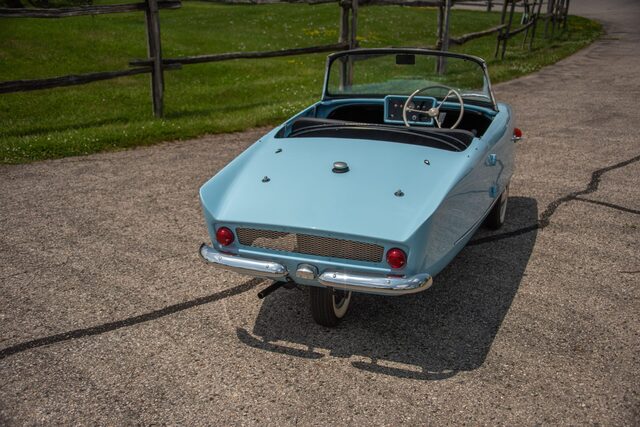
Among the various Frisky models, the 1959 Frisky Family Three Convertible stands out as a true gem of automotive design. This model was based on the original Frisky Family Three coupe but was cleverly converted into a three-wheeled convertible. Its design featured the distinctive “FriskySport” badging and a vibrant sky-blue paint job, which made it an even more eye-catching vehicle.

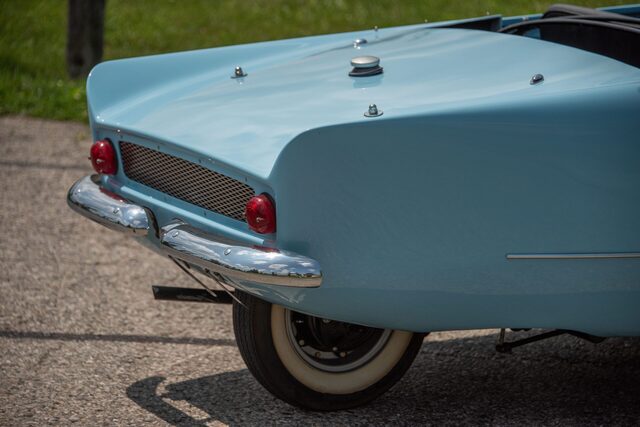
The Frisky Family Three Convertible was a sight to behold, with its sleek and compact body paired with a unique three-wheel configuration. Unlike other microcars of the era, which were often confined to basic utility, the Frisky was a vehicle that offered a hint of style and a touch of sophistication in a way that few others could match.
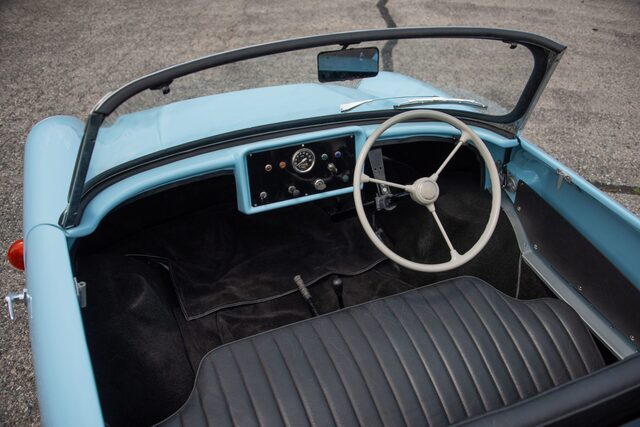
Frisky’s Engine and Performance
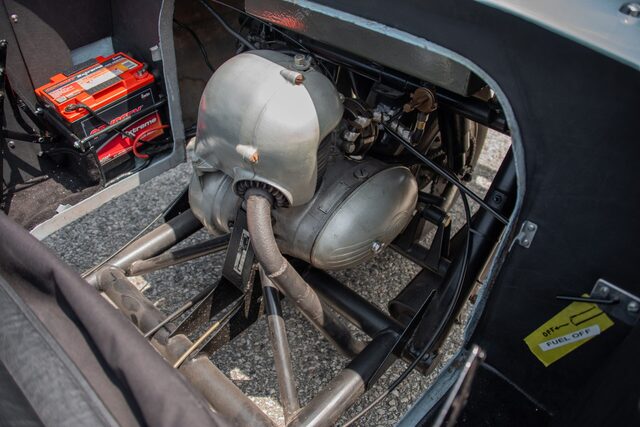
Under the hood, the Frisky Family Three Convertible housed a two-cylinder Villiers engine, which was a powerful choice for a car of its size. The engine provided just enough power to make the car fun to drive, while maintaining the fuel efficiency that made it an ideal choice for those in need of an affordable mode of transportation. The vehicle’s four-wheel configuration, while not standard in many microcars of the time, was a key feature that set the Frisky apart. Its simplicity and compact size made it a nimble, practical, and incredibly charming option for the daily commuter.
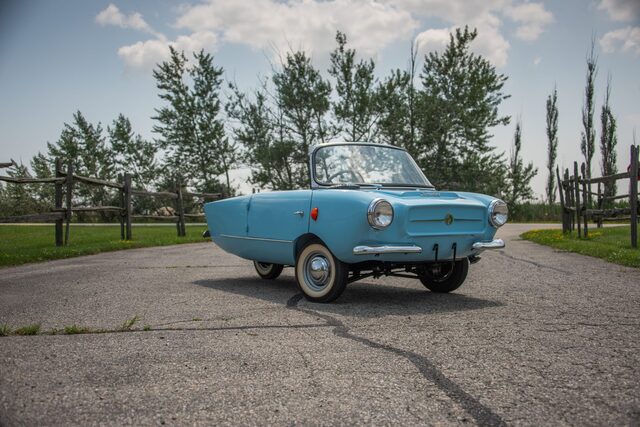
While it might not have been the fastest car on the road, the Frisky Family Three Convertible wasn’t about speed – it was about efficiency, affordability, and providing a uniquely enjoyable driving experience.
Frisky’s Legacy and Production Numbers
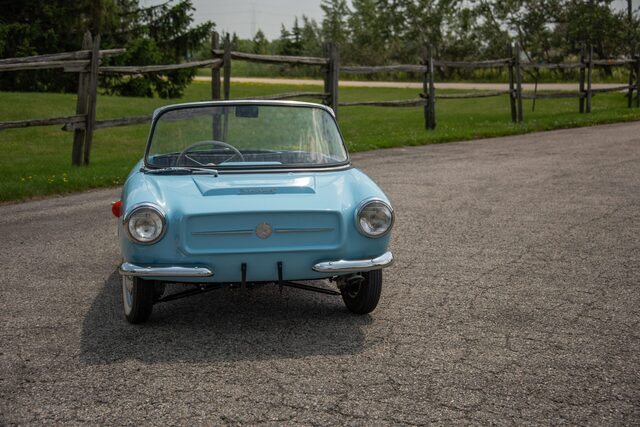
Unfortunately, the Frisky’s run was brief. Despite the innovative designs and forward-thinking concepts, Frisky Cars Ltd. closed its doors in 1961, with production ceasing after only around 1,500 cars were made. The limited production and unique appeal of the Frisky Family Three Convertible ensured that these vehicles became rare collector’s items. Of the 1,500 cars produced, only 75 remain in existence today, making each Frisky car an incredibly valuable piece of automotive history.
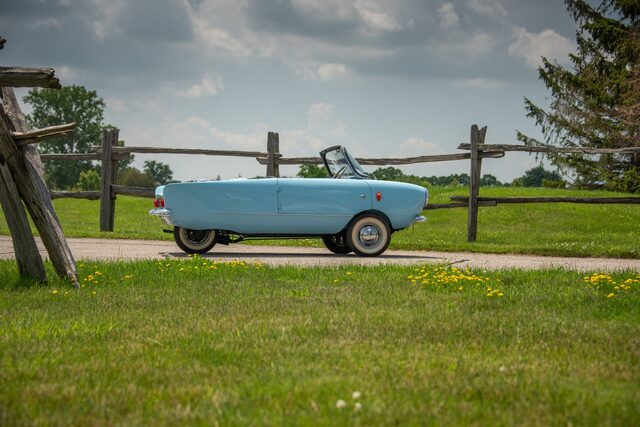
The closure of Frisky Cars Ltd. was due in part to financial troubles and the inability to break into the mainstream market. Despite this, the legacy of Frisky still endures, with enthusiasts and collectors cherishing the charm and novelty of these rare microcars.
Video
If you’re craving an adventure, watch how people embraced it back in 1959 – it’s an inspiring throwback, and you might just want to experience it yourself!
Conclusion: The Enduring Appeal of the Frisky Family Three
Today, the 1959 Frisky Family Three Convertible remains an enduring symbol of automotive innovation and quirky design. While it may not have revolutionized the microcar industry in the way that other iconic cars did, it certainly left its mark. The Frisky Family Three Convertible’s rare three-wheel configuration, unique design, and vibrant color scheme make it a captivating example of 1950s automotive engineering.
The story of the Frisky Family Three Convertible is a reminder of the boundless creativity and determination of small manufacturers who dared to dream big. Although the Frisky may have been short-lived, its legacy as a rare and charming collector’s item ensures that it will be remembered as one of the most unique microcars ever produced. As the world moves further into the modern era of cars, the Frisky Family Three Convertible serves as a nostalgic nod to a simpler time, where cars were as much about personality as they were about practicality.



